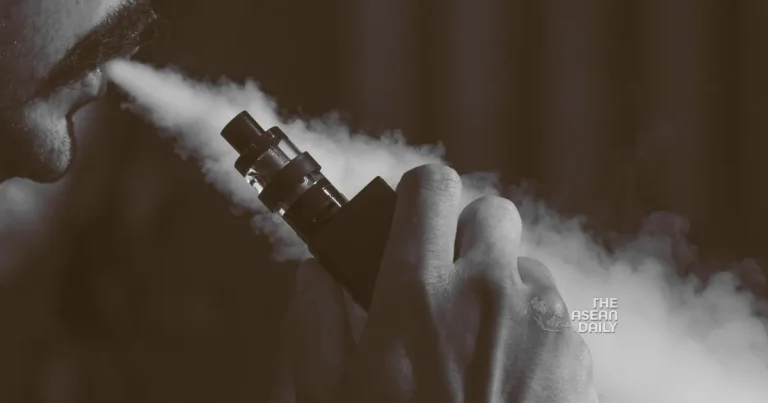15-4-2024 (SINGAPORE) Medical professionals treating respiratory issues are often unaware when patients have been vaping, as cases go untracked systematically in hospitals due to patients’ reluctance to disclose their vaping history. With authorities clamping down on vaping and increasing checks in public spaces like the Central Business District, parks and bars, those suffering breathing troubles from vaping are keeping mum.
Dr Sewa Duu Wen, head of respiratory and critical care medicine at Singapore General Hospital, revealed to The Straits Times a case where a patient developed respiratory failure after vaping, requiring an uncommon “whole lung lavage” procedure to wash out the lungs. “There are also anecdotal cases of patients admitted for exacerbated asthma and lung conditions after starting on vaping,” he added.
Experts are sounding alarms amid a global spike in disposable vape and e-cigarette usage, especially among teens and young adults. Emerald Insight estimates 82 million vapers worldwide in 2021, with 14.3 million in Southeast Asia, valuing the global e-cigarette and vape market at US$22.8 billion (S$31 billion) in 2022.
Data indicates an alarming rise in vaping among teenagers and those in their 20s globally. In 2021, 18-24 year-olds were most likely to vape among US adults, while 69% of British vapers were aged 11-17. Vape vendors often market their products as “healthier” cigarette alternatives or aids for quitting smoking.
However, the World Health Organization in December 2023 urged governments to regulate e-cigarettes like tobacco and ban all flavours. Dr Sewa explained e-cigarettes generate an aerosol containing propylene glycol, glycerine, flavourings and nicotine, exposing users to higher toxin levels.
“There are still many harmful chemicals like carcinogens, toxicants, heavy metals in e-cigarette vapour, which have harmful effects on the body. There is no minimal safe level of these compounds to inhale,” he stated, noting little research on vaping’s long-term effects.
In Singapore, vaping cases jumped 58% to about 7,900 in 2023 from 5,000 in 2022. Dr Sewa warned as e-cigarettes evolve into more personalised devices with varied flavours and additives, the risks of certain chemicals are emerging.
“Substantial evidence shows some chemicals present in e-cigarette aerosols, like formaldehyde and acrolein, together with trace metals nickel, lead and cadmium, are capable of causing DNA damage and mutagenesis, with potential carcinogenic effects,” he said.
Flavours like cotton candy and butterscotch increase appeal to youths, but ingredients like diacetyl for buttery flavours have been linked to serious lung diseases like bronchiolitis obliterans or “popcorn lung”.
Second Education Minister Maliki Osman revealed about 800 students were referred for vaping offences in 2022, up from fewer than 50 combined in 2018-2019, suggesting underreporting persists despite stepped-up school checks.
Dr Philip Eng, a respiratory physician, said while the vaping-linked lung injury epidemic “Evali” caused over 60 US deaths in 2019, no such severe Singaporean cases have been reported yet. However, vitamin E acetate mixed with cannabis compounds in some vapes appears strongly associated with developing lung disease.
The recent case of 20-year-old Briton Abby Flynn, hospitalised with “popcorn lung” after consuming vape liquid equivalent to 140 cigarettes weekly for 1.5 years, serves as a stark warning.
In Singapore, vaping offences can attract fines up to $2,000, while illegal import, distribution or sales draw penalties up to $10,000 and/or 6 months’ jail.




